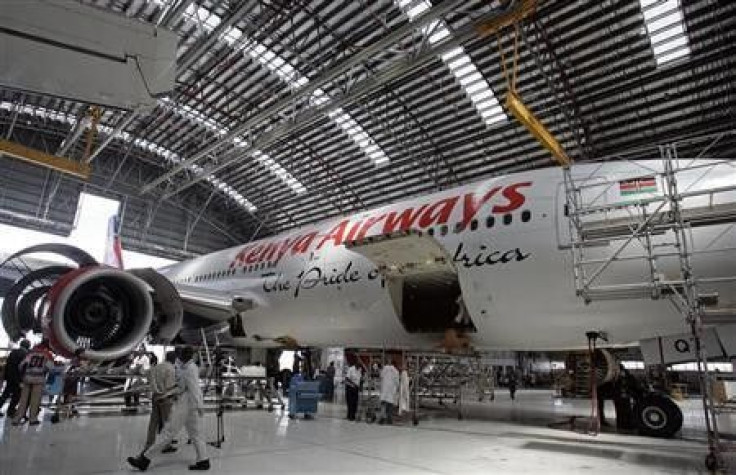Kenya Airways raises H1 profit ahead of cash call

Kenya Airways used fuel hedges to protect its bottom line from an escalation in direct costs in its first-half ended September, it said on Thursday, as it prepares to raise funds to finance its expansion.
The airline, 26 percent owned by Air France-KLM, posted a 38 percent jump in pretax profit to 2.83 billion shillings as 1.45 billion shillings in realised gains from fuel derivatives offset a 52 percent jump in direct costs, which it blamed partly on higher jet fuel prices.
Revenue growth is always a good indicator of a company's performance and the hedge gains show good management of risks facing the business, said Judd Murigi, head of east Africa research at African Alliance Securities.
Revenue increased by a third to just under 55 billion shillings, lifted by growth in passengers and cargo at improved costs per unit. Kenya Airways ferried 1.86 million passengers during the period.
Its shares rose more than 1 percent to 23.25 shillings per share after the results.
COMPETITION
Chief executive Titus Naikuni warned competition was growing as airlines from outside Africa arrive in search of growth, with other carriers from Asia and the Far East likely to join the fray, attracted by booming passenger numbers on the continent.
The African market is not a mature market, it is a market which is growing... there is going to be an increase in travel in Africa and we are noticing it, Naikuni said.
The airline's strategy rests on connecting Africa to the rest of the world and vice versa, through its Nairobi hub.
We are planning to increase frequencies and also open up new destinations. We want to open six new destinations in China and also five destinations in India, Naikuni said.
CASH CALL
Kenya Airways is embarking on a fundraising round through a cash call to finance the expansion of its fleet, which it wants to double in five years.
Although shareholders including the Kenyan government have pledged to take up their rights, the company is looking for an underwriter for a portion of the issue as it awaits regulatory approval.
It also plans to launch a low-cost carrier, to be known as Jambo Jet, to take advantage of growing trade between Kenya, Uganda, Rwanda, Tanzania and Burundi, which make up the east African common market.
Kenya Airways hopes it will help protect the company's huge lead on regional routes, which have some of the highest margins in its network, from emerging competition by smaller independent carriers.
We are looking at having it in operation in first quarter of the next calendar year, Naikuni said.
Some analysts pointed to challenges on the horizon.
That (oil price) continues to be quite challenging. The foreign exchange volatility, as the shilling strengthens that will be a risk because they are a dollar-denominated business, said Jeff Odundo, managing director at Kingdom Securities.
© Copyright Thomson Reuters 2024. All rights reserved.











